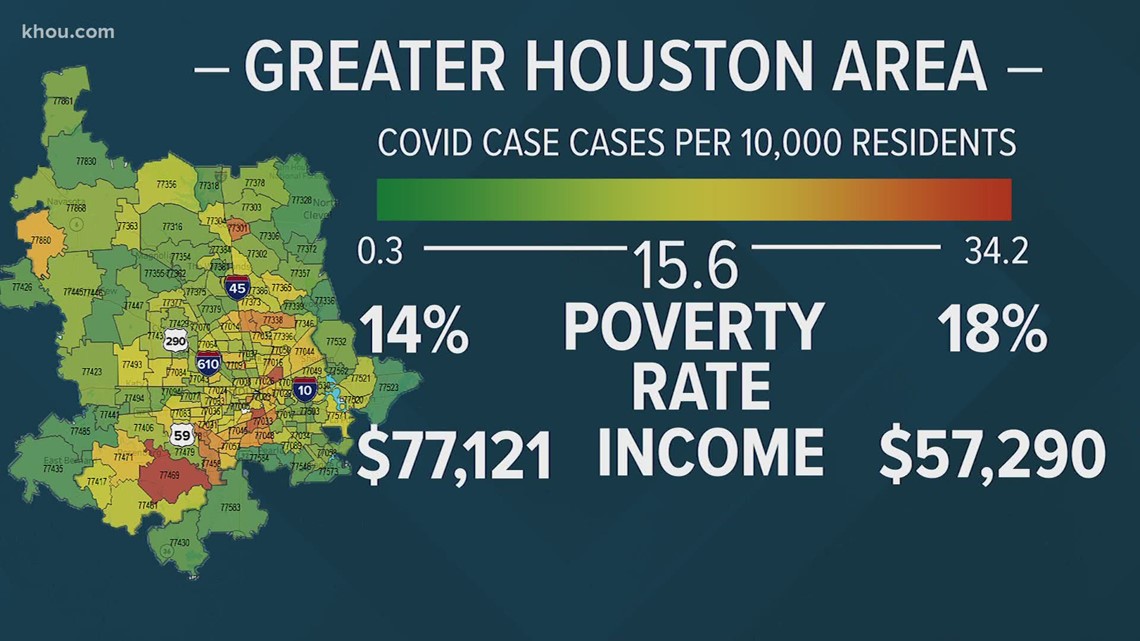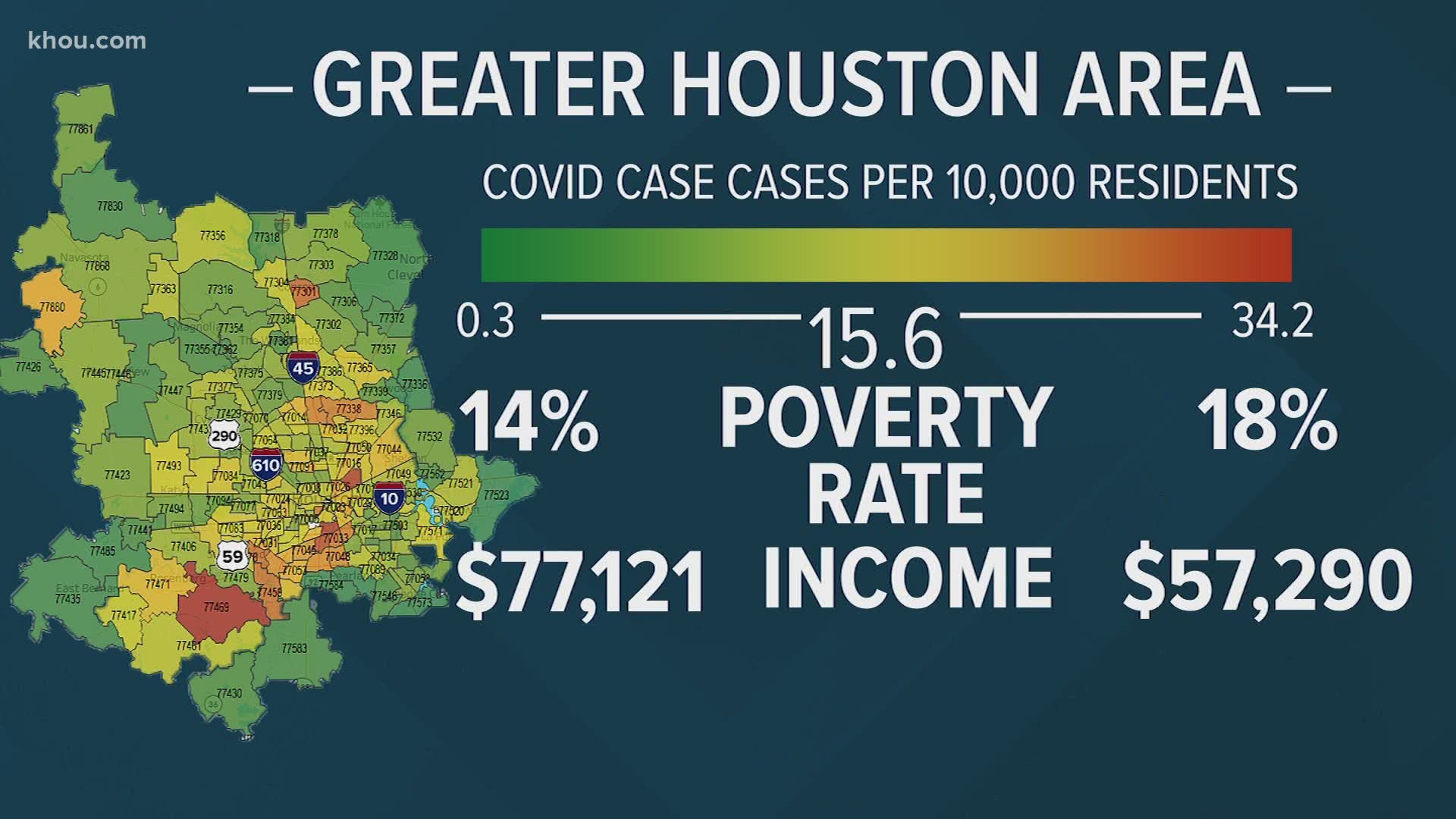HOUSTON — Data reveal a link that’s hard to ignore between race, poverty and testing positive for coronavirus in the Greater Houston area.
KHOU 11 Investigates analyzed 9,300 COVID-19 cases by zip code tracked by Harris, Fort Bend, Montgomery, Waller, Grimes and Washington counties’ health departments and most recent U.S. Census data.
There’s an average of 15.6 cases per 10,000 people for each zip code as of May 6.
People who live in areas with the highest concentration of coronavirus cases make less money than their counterparts and are more likely to be Hispanic or black.
A closer look reveals in lower coronavirus areas, the poverty level is 14% and the median household income is $77,121.
In areas with higher COVID-19 rates, poverty jumps to 18 percent and household income drops nearly $20,000 to $57,290.


“We have to face the fact that it costs money to socially distance effectively,” said Stephen Linder, director of the Institute for Health Policy at UTHealth School of Public Health.
For example, Linder said the poor are less likely to get groceries curbside or delivered. They may not have a car and are more exposed on public transportation. They also may not have an option to work from home.
“You may be in an occupation that requires substantially more exposure,” Linder said. “Poverty makes everything worse.”
The data also reveal racial disparities.
In zip codes with lower COVID-19 rates, 46% of the people are Hispanic or black. That jumps to 67% in zip codes with higher COVID rates.
“We learned from Harvey that disasters do discriminate,” said Stephen Klineberg, professor of sociology and founding director at the Rice University Kinder Institute for Urban Research.
Three hotspots for coronavirus cases—zip codes 77021, 77028 and 77051—all have predominately black and Hispanic populations at 86%, 98% and 95%, respectively
“We ask people in our surveys, for example, how is your state of health these days: excellent, good, fair or poor? And African Americans and Latinos are twice as likely as Anglos to say their current state of health is fair or poor,” Klineberg said.
Underlying health issues can mean more risk and ultimately more positive cases.
Zip code-level data can help public health experts zero in on where resources are needed the most in the fight against coronavirus.
“It’s the only way that you can identify the hotspots for the disease are and to be able to get some containment of the hotspots for the disease,” Linder said.
MORE FROM KHOU 11 INVESTIGATES
- At a Brenham nursing home: 102 coronavirus cases, 19 deaths
- Order halting eviction proceedings doesn’t stop landlords from filing claims
- Nearly half of Texas COVID-19 deaths linked to long-term care facilities
- Legal? Constitutional? Harris County order requiring face coverings challenged
- How Hurricane Harvey is helping COVID-19 response

